Abstract
Human liver aldehyde oxidase (aldehyde: O2 oxidoreductase, EC 1.2.3.1) has been purified 60-fold and some of its properties studied. Like aldehyde oxidase from other mammalian species, human liver aldehyde oxidase is an enzyme with dual substrate specificity, possessing the ability to catalyze not only the oxidation of aldehydes to the corresponding carboxylic acids, but also the hydroxylation of a number of nonaldehydic heterocyclic compounds; its relative activity towards the latter group of substrates is low, however, when compared with that of liver aldehyde oxidase from rabbit and guinea pig. When the aromatic aldehyde benzaldehyde is used as substrate, human liver aldehyde oxidase, like the rabbit enzyme, is strongly inhibited by menadione, estradiol-17β, antimycin A, Triton X-100, and N-alkylphenothiazines; the human enzyme differs from the rabbit enzyme, however, in being relatively insensitive to oligomycin and Amytal. Like the rabbit enzyme, the human enzyme can catalyze the 3-hydroxylation of phenazine methosulfate (PMS) and the 6-hydroxylation of N-methylnicotinamide (NMN). With the rabbit enzyme, however, the aerobic hydroxylation of these substrates proceeds by a conventional mechanism, while with the human enzyme, the aerobic hydroxylation of PMS and NMN is anomalous in that the reaction is inhibited only by agents with affinity for the substrate-binding site, such as cyanide and N-alkylphenothiazines, and not by agents which inhibit the “internal electron transport chain” of the enzyme, such as menadione and diethylstilbestrol. This mode of oxidation appears to be unique to substrates with a positively charged quaternary nitrogen; the hydroxylation of other nonaldehydic heterocyclic substrates for the human enzyme is sensitive to conventional aldehyde oxidase inhibitors.
Full text
PDF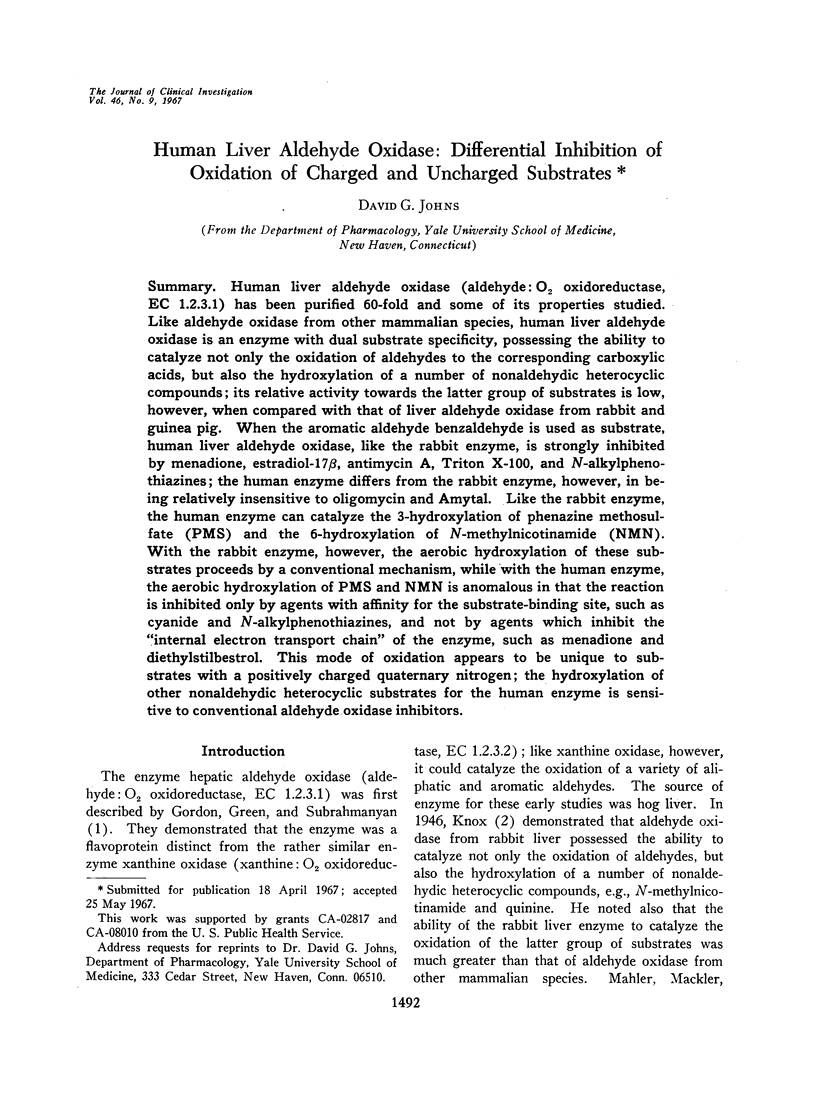
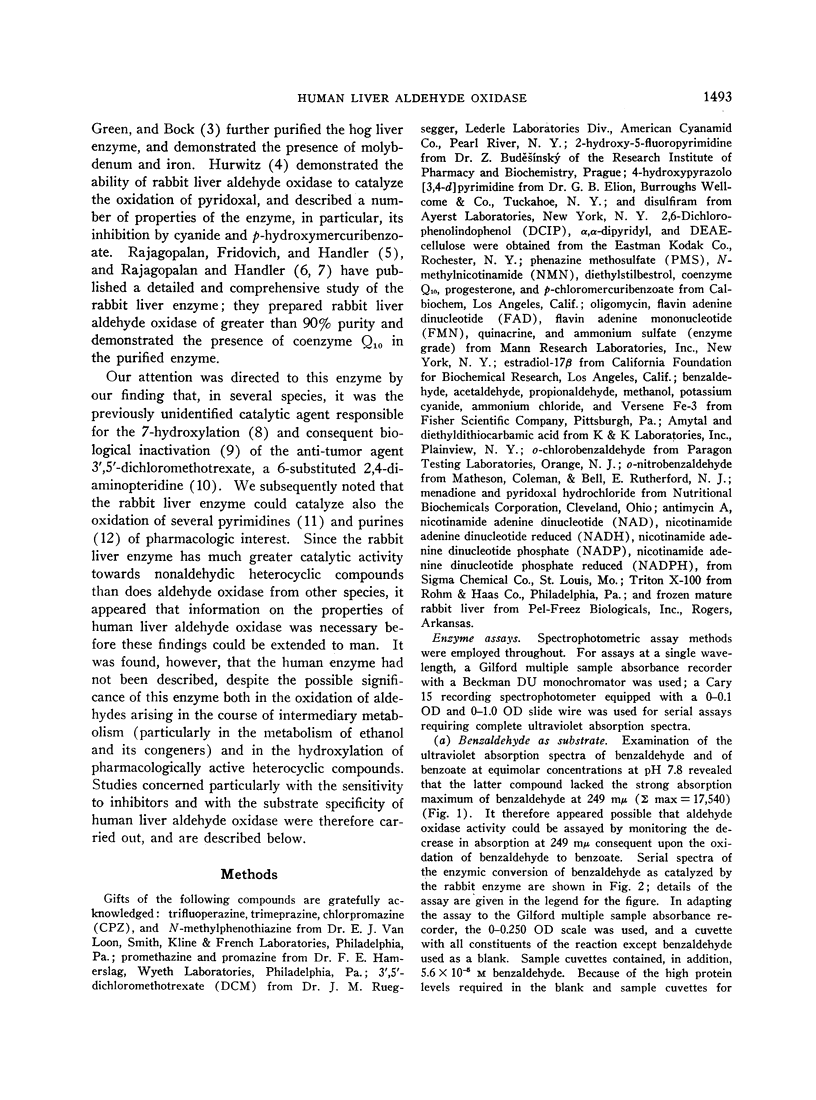
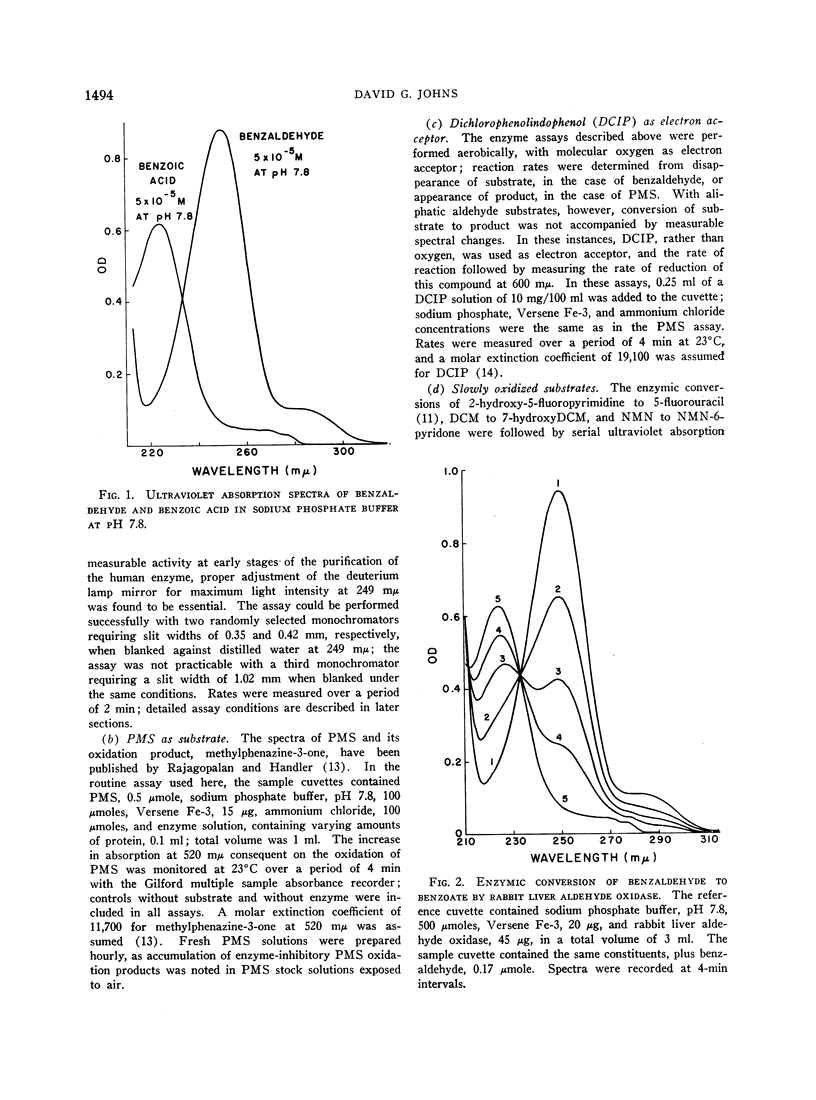
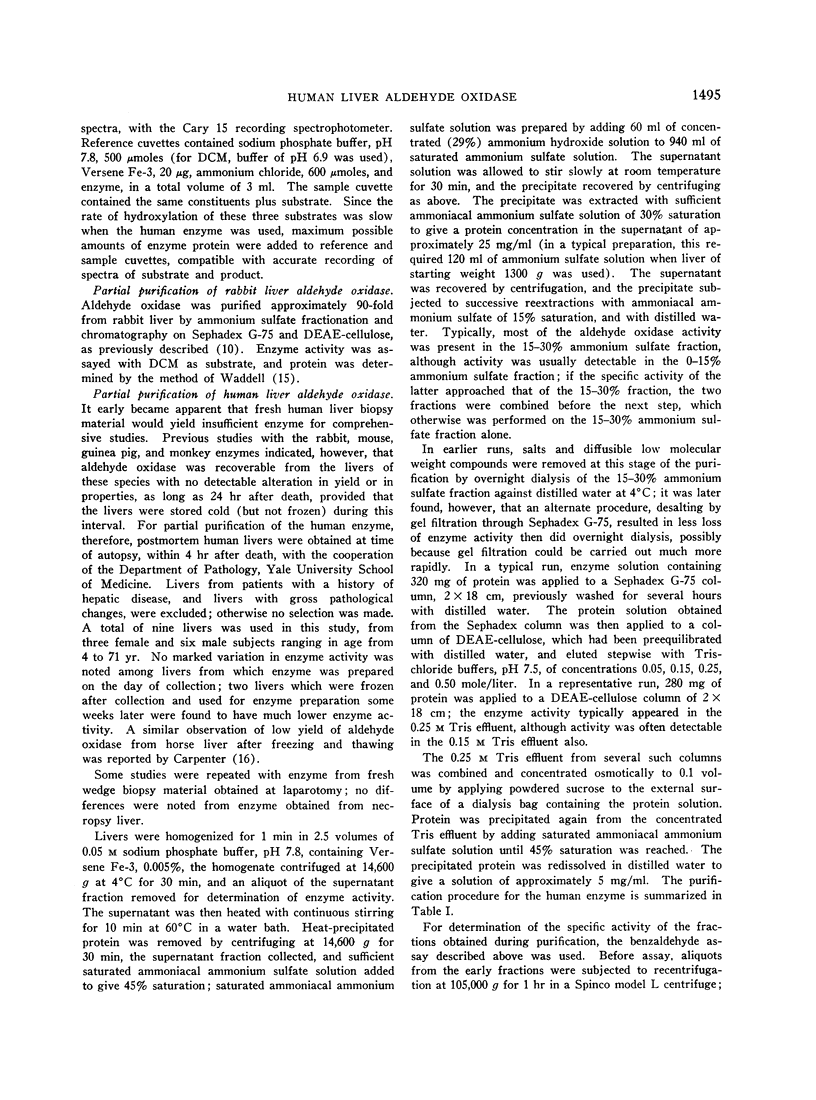
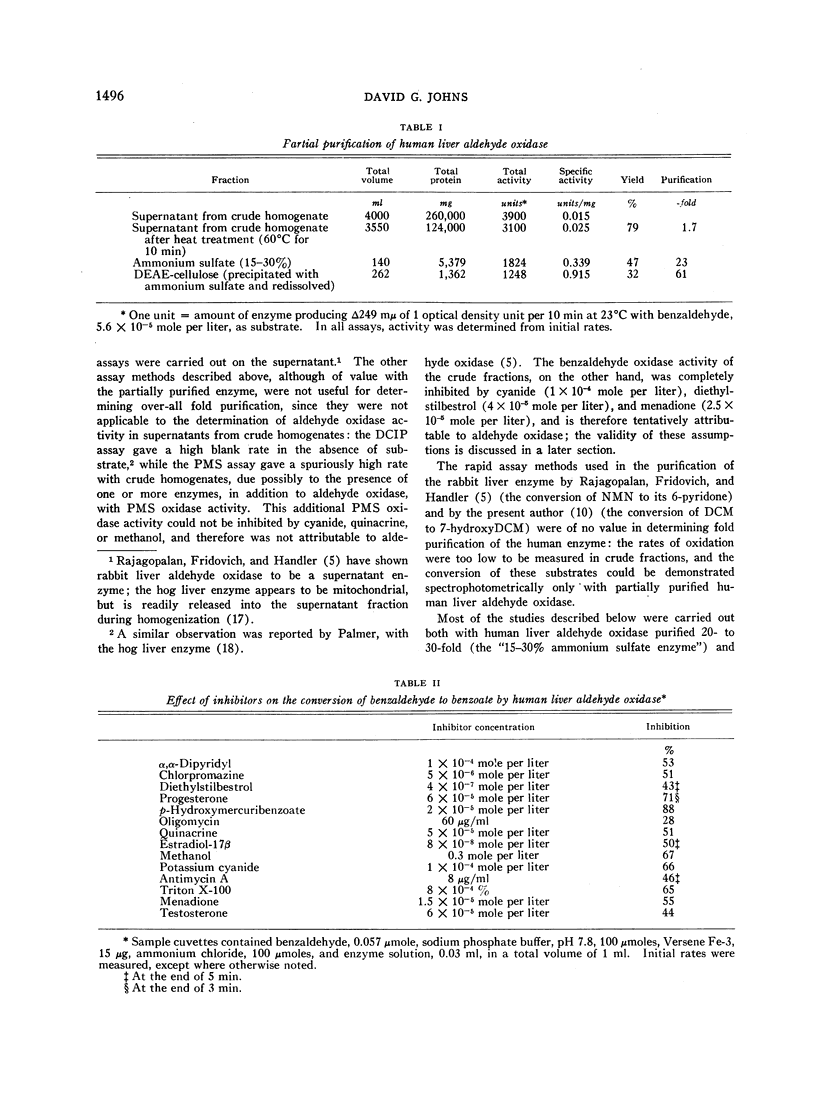
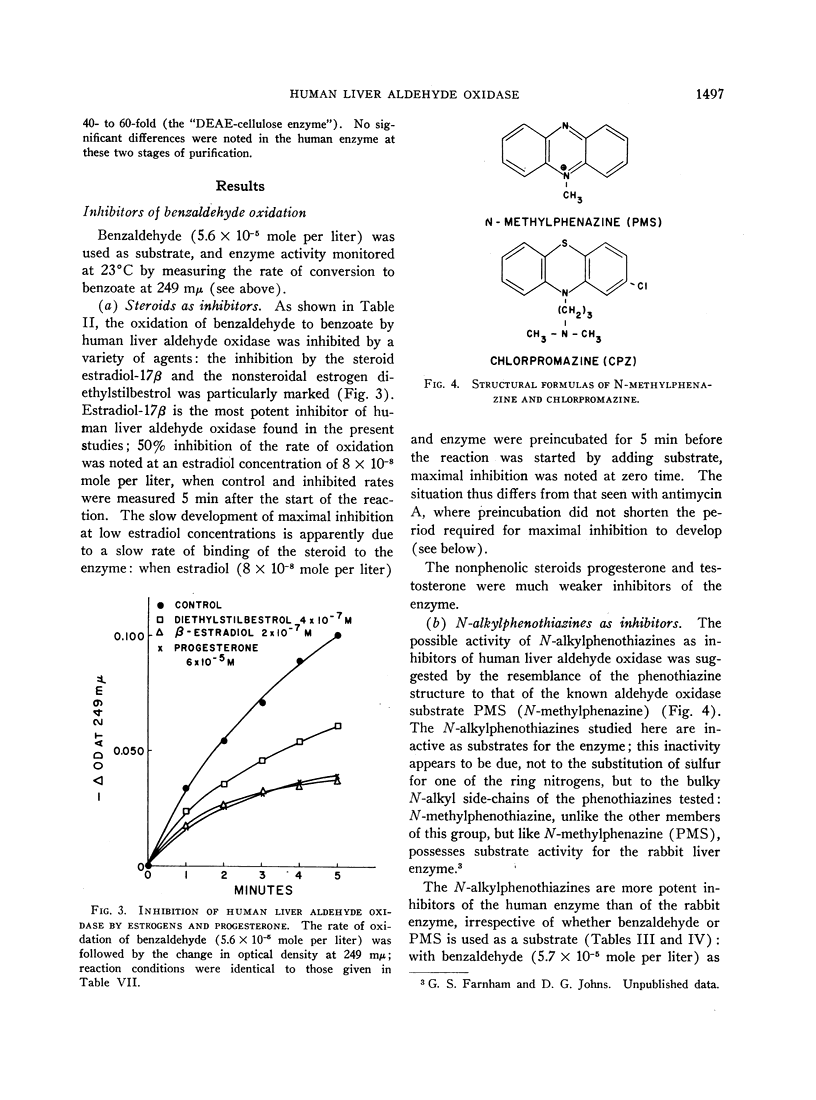
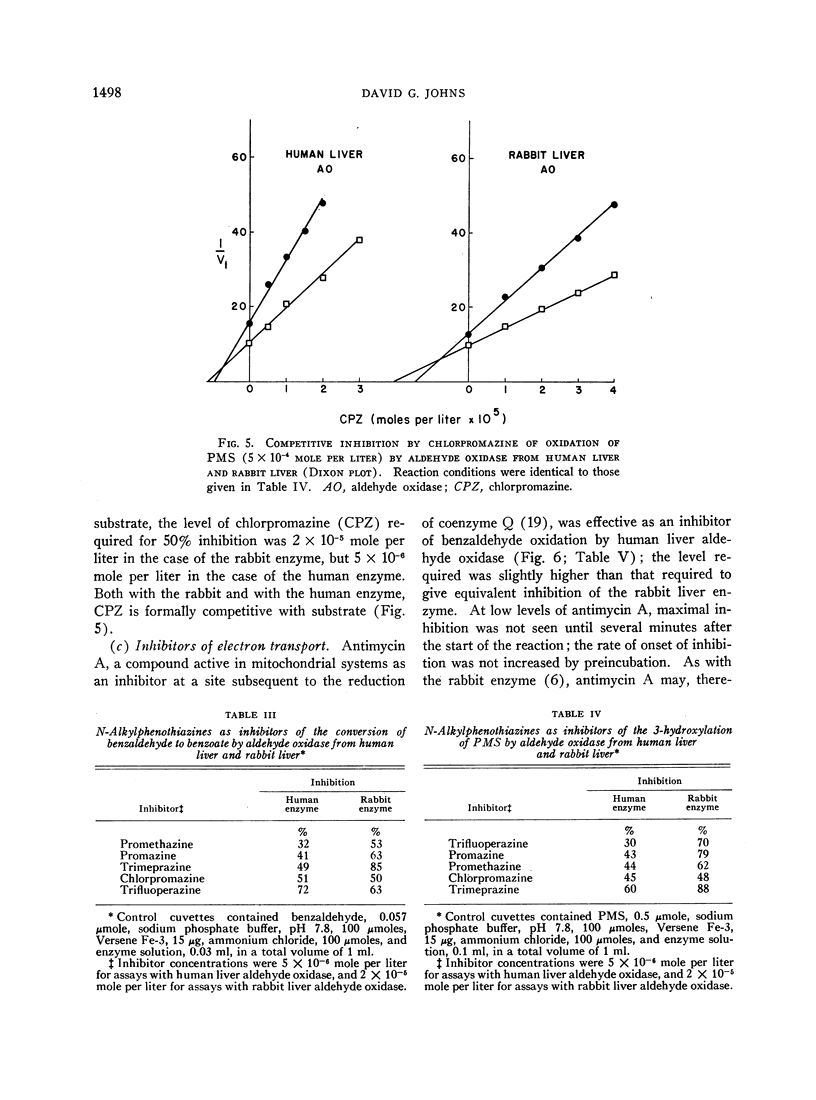
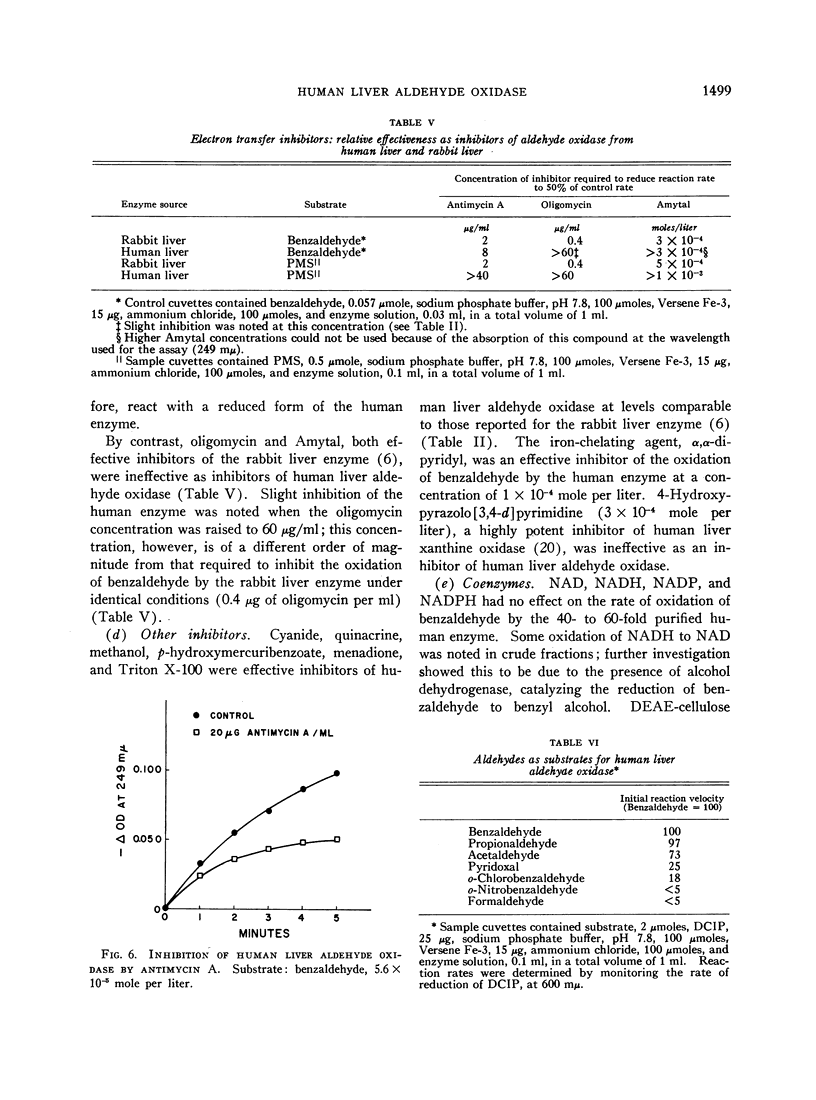
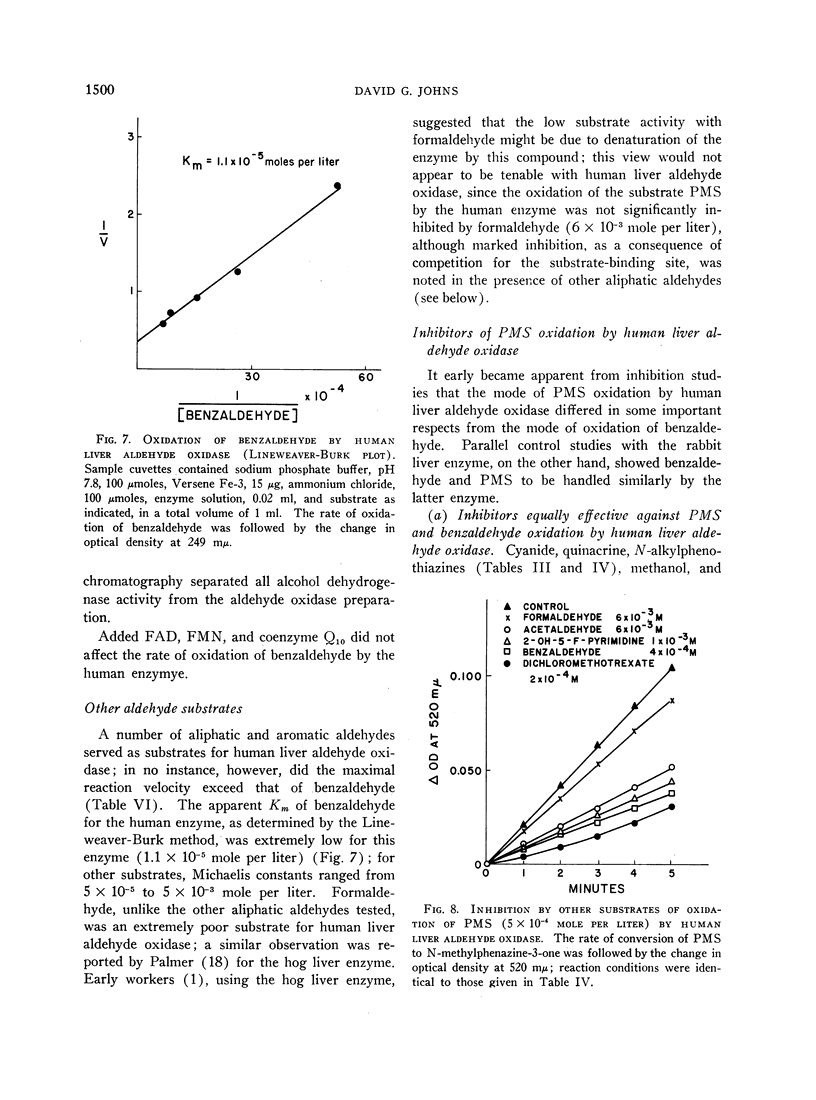
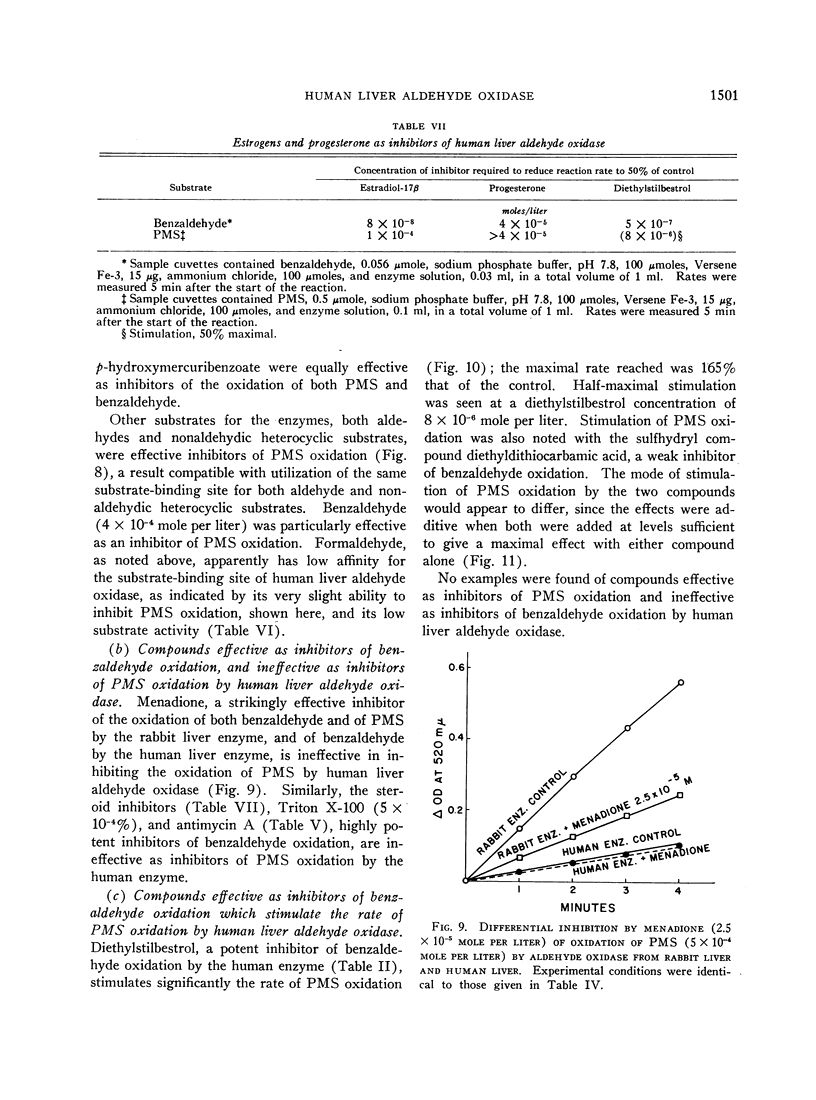
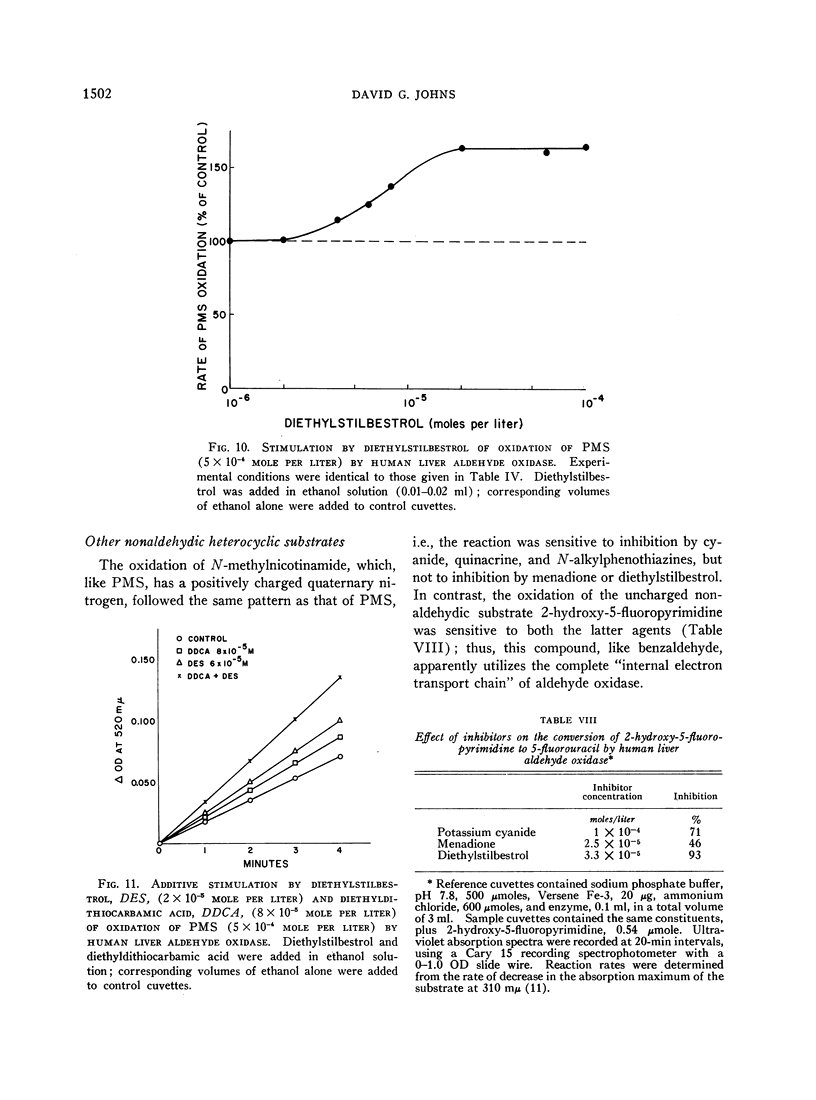
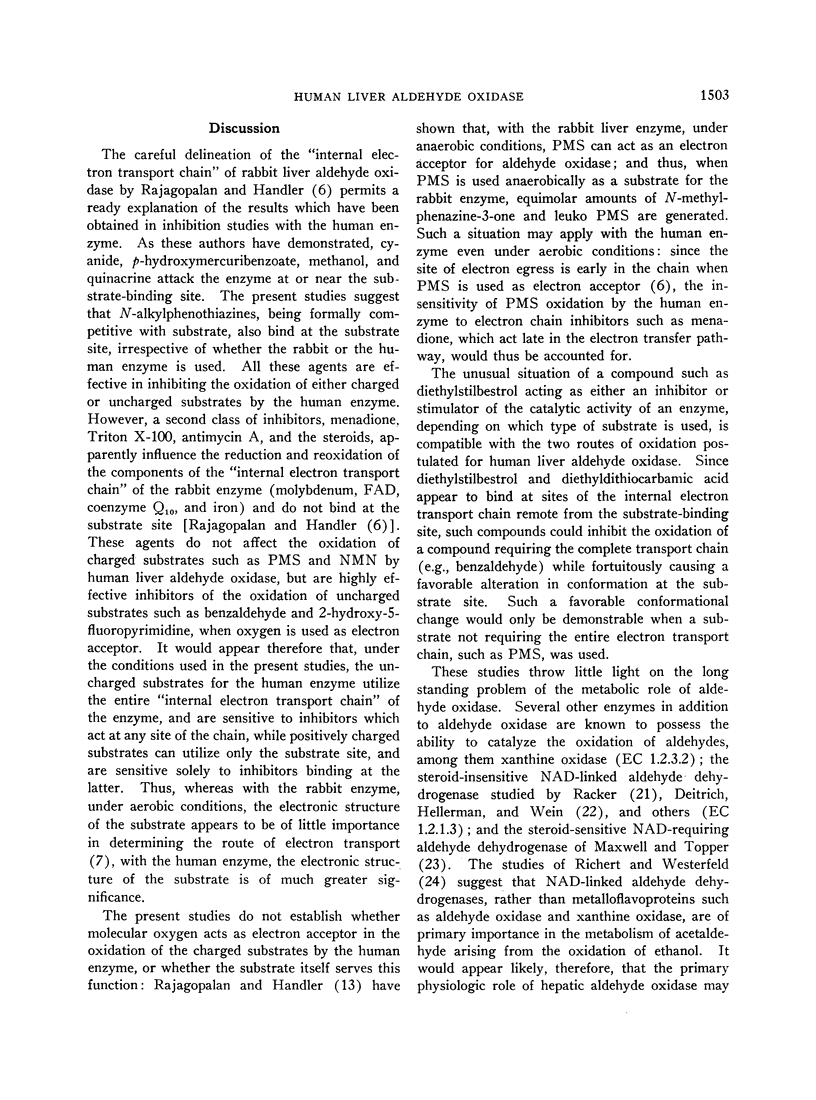
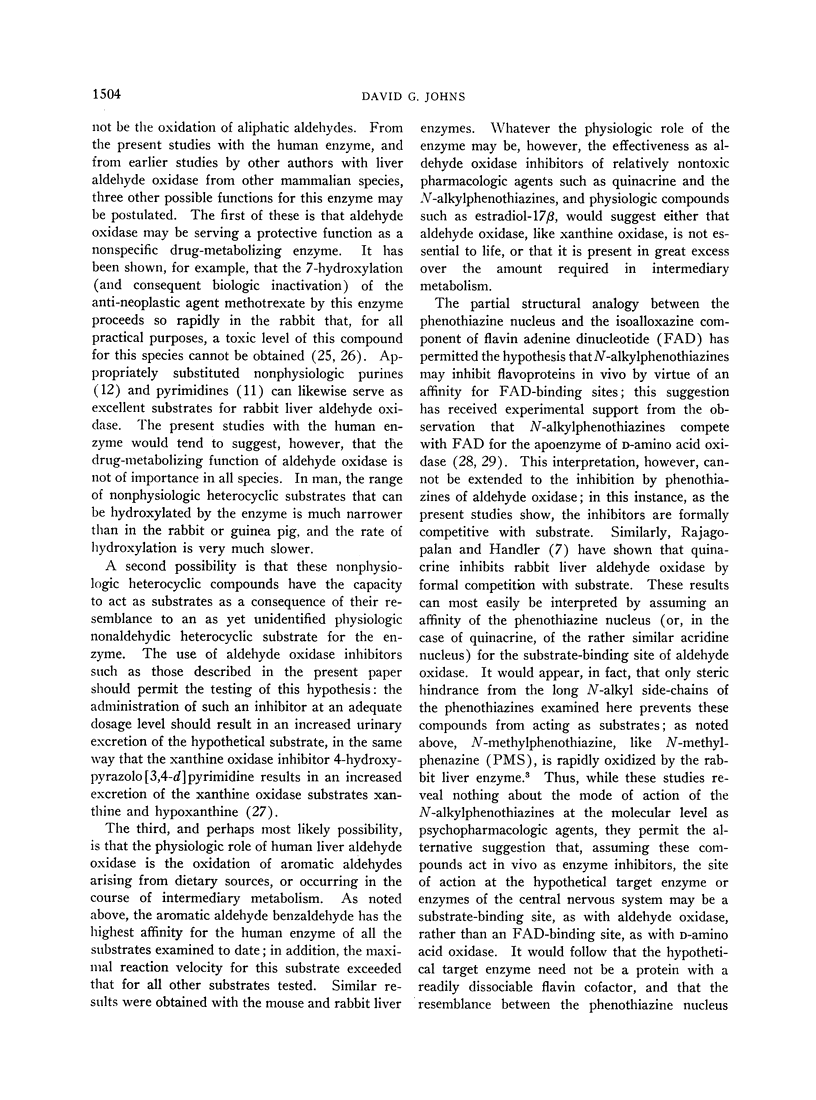
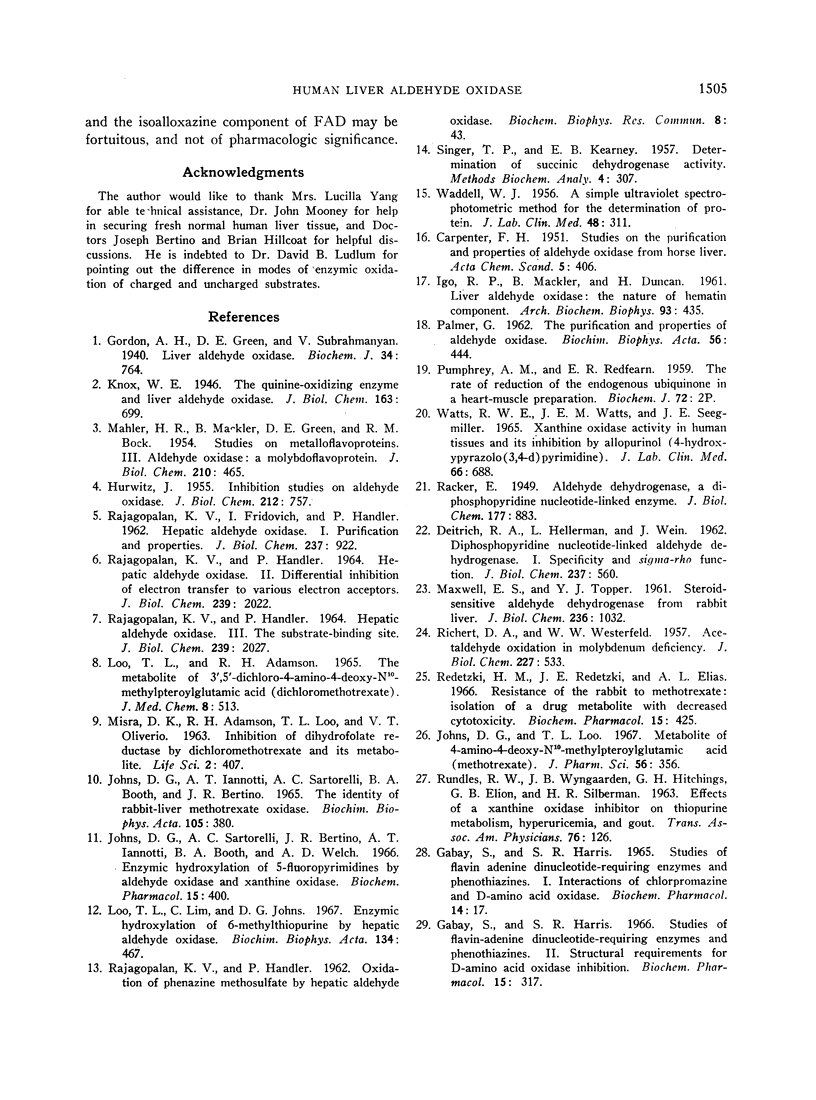
Selected References
These references are in PubMed. This may not be the complete list of references from this article.
- DEITRICH R. A., HELLERMAN L., WEIN J. Diphosphopyridine nucleotide-linked aldehyde dehydrogenase. I. Specificity and sigma-rho function. J Biol Chem. 1962 Feb;237:560–564. [PubMed] [Google Scholar]
- GABAY S., HARRIS S. R. STUDIES OF FLAVIN ADENINE DINUCLEOTIDE-REQUIRING ENZYMES AND PHENOTHIAZINES-I. INTERACTIONS OF CHLORPROMAZINE AND D-AMINO ACID OXIDASE. Biochem Pharmacol. 1965 Jan 1;14:17–26. doi: 10.1016/0006-2952(65)90053-5. [DOI] [PubMed] [Google Scholar]
- Gabay S., Harris S. R. Studies of flavin-adenine dinucleotide-requiring enzymes and phenothiazines. II. Structural requirements for D-amino acid oxidase inhibition. Biochem Pharmacol. 1966 Mar;15(3):317–322. doi: 10.1016/0006-2952(66)90302-9. [DOI] [PubMed] [Google Scholar]
- Gordon A. H., Green D. E., Subrahmanyan V. Liver aldehyde oxidase. Biochem J. 1940 May;34(5):764–774. doi: 10.1042/bj0340764. [DOI] [PMC free article] [PubMed] [Google Scholar]
- HURWITZ J. Inhibition studies on aldehyde oxidase. J Biol Chem. 1955 Feb;212(2):757–769. [PubMed] [Google Scholar]
- IGO R. P., MACKLER B., DUNCAN H. Liver aldehyde oxidase: the nature of hematin component. Arch Biochem Biophys. 1961 May;93:435–439. doi: 10.1016/0003-9861(61)90290-9. [DOI] [PubMed] [Google Scholar]
- Johns D. G., Iannotti A. T., Sartorelli A. C., Booth B. A., Bertino J. R. The identity of rabbit-liver methotrexate oxidase. Biochim Biophys Acta. 1965 Aug 24;105(2):380–382. doi: 10.1016/s0926-6593(65)80164-3. [DOI] [PubMed] [Google Scholar]
- Johns D. G., Sartorelli A. C., Bertino J. R., Iannotti A. T., Booth B. A., Welch A. D. Enzymic hydroxylation of 5-fluoropyrimidines by aldehyde oxidase and xanthine oxidase. Biochem Pharmacol. 1966 Mar;15(3):400–403. doi: 10.1016/0006-2952(66)90314-5. [DOI] [PubMed] [Google Scholar]
- Loo T. L., Adamson R. H. The metabolite of 3', 5'-dichloro-4-amino-4-deoxy-N10-methylpteroylglutamic acid (dichloromethotrexate). J Med Chem. 1965 Jul;8(4):513–515. doi: 10.1021/jm00328a023. [DOI] [PubMed] [Google Scholar]
- MAHLER H. R., MACKLER B., GREEN D. E. Studies on metalloflavoproteins. III. Aldehyde oxidase: a molybdoflavoprotein. J Biol Chem. 1954 Sep;210(1):465–480. [PubMed] [Google Scholar]
- MAXWELL E. S., TOPPER Y. J. Steroid-sensitive aldehyde dehydrogenase from rabbit liver. J Biol Chem. 1961 Apr;236:1032–1037. [PubMed] [Google Scholar]
- PALMER G. The purification and properties of aldehyde oxidase. Biochim Biophys Acta. 1962 Jan 29;56:444–459. doi: 10.1016/0006-3002(62)90596-6. [DOI] [PubMed] [Google Scholar]
- RAJAGOPALAN K. V., FRIDOVICH I., HANDLER P. Hepatic aldehyde oxidase. I. Purification and properties. J Biol Chem. 1962 Mar;237:922–928. [PubMed] [Google Scholar]
- RAJAGOPALAN K. V., HANDLER P. HEPATIC ALDEHYDE OXIDASE. 3. THE SUBSTRATE-BINDING SITE. J Biol Chem. 1964 Jun;239:2027–2035. [PubMed] [Google Scholar]
- RAJAGOPALAN K. V., HANDLER P. HEPATIC ALDEHYDE OXIDASE. II. DIFFERENTIAL INHIBITION OF ELECTRON TRANSFER TO VARIOUS ELECTRON ACCEPTORS. J Biol Chem. 1964 Jun;239:2022–2026. [PubMed] [Google Scholar]
- RAJAGOPALAN K. V., HANDLER P. Oxidation of phenazine methosulfate by hepatic aldehyde oxidase. Biochem Biophys Res Commun. 1962 Jun 19;8:43–47. doi: 10.1016/0006-291x(62)90232-2. [DOI] [PubMed] [Google Scholar]
- RICHERT D. A., WESTERFELD W. W. Acetaldehyde oxidation in molybdenum deficiency. J Biol Chem. 1957 Jul;227(1):533–536. [PubMed] [Google Scholar]
- Redetzki H. M., Redetzki J. E., Elias A. L. Resistance of the rabbit tomethotrexate: isolation of a drug metabolite with decreased cytotoxicity. Biochem Pharmacol. 1966 Apr;15(4):425–433. doi: 10.1016/0006-2952(66)90253-x. [DOI] [PubMed] [Google Scholar]
- SINGER T. P., KEARNEY E. B. Determination of succinic dehydrogenase activity. Methods Biochem Anal. 1957;4:307–333. doi: 10.1002/9780470110201.ch9. [DOI] [PubMed] [Google Scholar]
- WADDELL W. J. A simple ultraviolet spectrophotometric method for the determination of protein. J Lab Clin Med. 1956 Aug;48(2):311–314. [PubMed] [Google Scholar]
- Watts R. W., Watts J. E., Seegmiller J. E. Xanthine oxidase activity in human tissues and its inhibition by allopurinol (4-hydroxypyrazolo[3,4-d] pyrimidine). J Lab Clin Med. 1965 Oct;66(4):688–697. [PubMed] [Google Scholar]


